Explore the Best Places to Visit in France - A Traveler's Guide
Discovering Elegance: The Top 10 Cities to Explore in France"
COUNTRIES
1/29/202414 min read
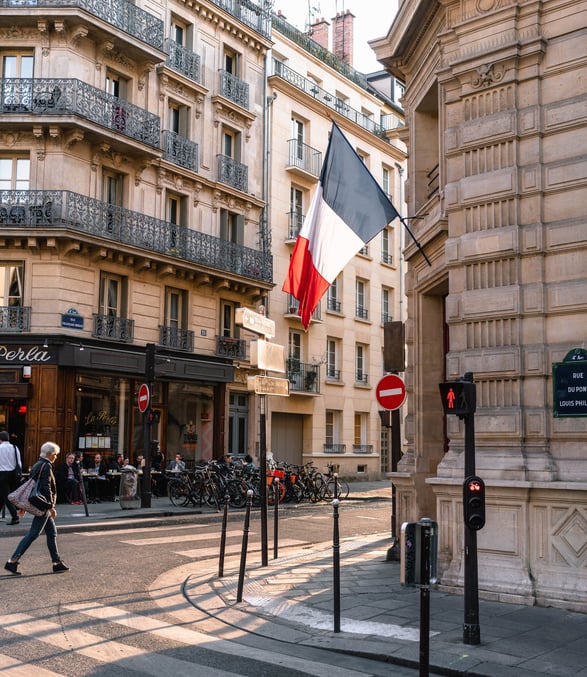

Embarking on a journey through France is a dream that conjures visions of romantic landscapes, exquisite cuisine, and a cultural tapestry woven with the threads of history. Beyond the postcard-perfect images of lavender fields and vineyard-covered hillsides, France is a country that unfolds its beauty city by city. In this comprehensive guide, we invite you to delve into the essence of France as we explore the top 10 cities that epitomize the nation's charm. From the iconic elegance of Paris to the sun-kissed allure of the French Riviera, each city on this list tells a unique story, promising an immersive experience that encompasses art, history, gastronomy, and the sheer joie de vivre that defines France. Join us on a captivating journey through the heart of this enchanting country as we uncover the diverse treasures awaiting travelers in the top 10 cities of France. Bon voyage!
Paris - The City of Lights:
Introduction: Paris, often hailed as the "City of Lights," stands as an enduring symbol of romance, culture, and timeless elegance. Nestled along the banks of the Seine River, the French capital captivates millions of visitors with its iconic landmarks, artistic treasures, and culinary delights.
Landmarks and Architecture: The Eiffel Tower, a globally recognized icon, presides over the cityscape, offering breathtaking views of Paris from its lofty heights. The Louvre Museum, a former royal palace, houses a vast collection of art, including the enigmatic Mona Lisa. Notre-Dame Cathedral, with its Gothic spires, tells tales of centuries past.
Art and Culture: Paris is a haven for art enthusiasts, boasting world-class museums and galleries. The Musée d'Orsay showcases Impressionist masterpieces, while the Centre Pompidou celebrates modern and contemporary art. The city's theaters, including the historic Opéra Garnier, contribute to a vibrant cultural scene.
Cuisine and Culinary Delights: Parisian cuisine is a celebration of flavor and refinement. Indulge in delicate pastries at charming patisseries, savor a leisurely meal at a sidewalk café, or experience haute cuisine in Michelin-starred restaurants. From croissants to coq au vin, Paris tantalizes taste buds with its culinary artistry.
Charm and Romance: Beyond its grandeur, Paris exudes an undeniable charm. Stroll along the Seine River at sunset, wander through the historic Marais district's narrow streets, and partake in the simple joy of a picnic in the Luxembourg Gardens. Paris is a city where every corner tells a story, and every moment is infused with romance.
Best Time: Spring (April to June) and Fall (September to October) Why: Mild temperatures, blooming flowers, and fewer tourists make spring and fall ideal for exploring Paris. The city comes alive with outdoor events and the beauty of parks in full bloom.
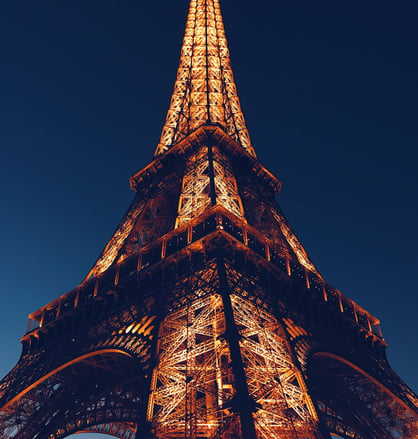

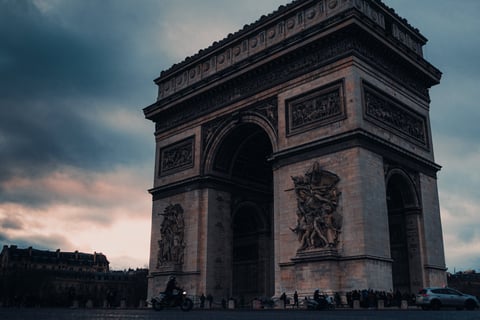

Nice - A Mediterranean Gem:
Introduction: Situated on the sun-drenched French Riviera, Nice beckons travelers with its azure waters, vibrant promenade, and a perfect blend of natural beauty and urban sophistication.
Beaches and Promenade: Nice boasts some of the most stunning beaches along the Mediterranean coast. The Promenade des Anglais, a picturesque waterfront promenade, offers panoramic views of the sea and the vibrant city life. Relax on pebbled shores, take a dip in the refreshing waters, or simply enjoy a leisurely seaside stroll.
Old Town and Architecture: The Old Town (Vieux Nice) is a maze of narrow streets lined with colorful buildings, charming boutiques, and bustling markets. The city's architecture reflects its rich history, with influences from Italian and French traditions. The iconic Colline du Château provides a panoramic view of Nice and the surrounding coastline.
Cultural Attractions: Nice is not only a beach destination but also a cultural hub. The Marc Chagall National Museum and the Matisse Museum showcase the works of renowned artists, while the Russian Orthodox Cathedral adds a touch of exotic splendor to the city's skyline.
Cuisine and Gastronomy: The culinary scene in Nice is a delightful fusion of Provençal and Mediterranean flavors. Indulge in Niçoise specialties such as socca (chickpea pancake), salade niçoise, and ratatouille. The city's markets, such as the Cours Saleya, offer a feast for the senses with fresh produce, spices, and local delicacies.
Artistic Sunsets: As the day winds down, Nice treats visitors to breathtaking sunsets over the Mediterranean. Find a cozy spot along the Promenade des Anglais or venture to Castle Hill for a captivating view as the sky transforms into a canvas of warm hues.
Best Time: Late spring (May to June) and early fall (September to October) Why: The weather is pleasantly warm, and the Mediterranean Sea is inviting for swimming. These months avoid the peak summer crowds while offering delightful conditions.
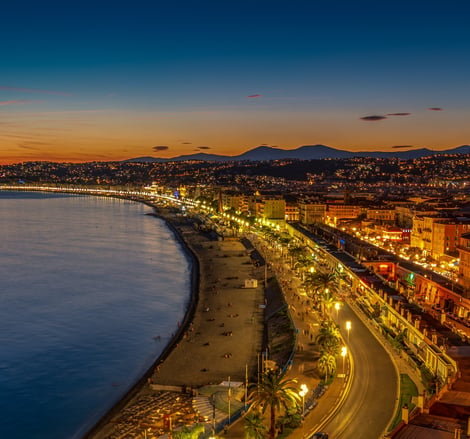

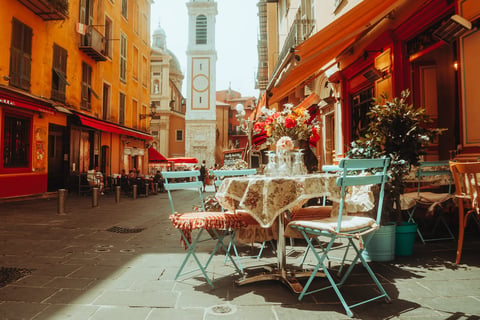

Lyon - The Culinary Capital:
Introduction: Nestled in the Rhône-Alpes region, Lyon is a city that tantalizes taste buds and celebrates the art of gastronomy. Renowned as the "Culinary Capital" of France, Lyon offers a sensory journey through delectable flavors and culinary traditions.
Bouchons and Gastronomic Excellence: Lyon's culinary scene is anchored by its traditional bouchons – cozy restaurants serving hearty, regional fare. From rich stews like coq au vin to the iconic Lyonnaise salad, bouchons showcase the essence of Lyonnais gastronomy. The city is also home to several Michelin-starred restaurants, elevating dining to an exquisite experience.
Presqu'île and Old Town: The Presqu'île, a peninsula between the Rhône and Saône rivers, is Lyon's commercial and cultural heart. Wander through stylish boutiques, visit the Place Bellecour, and explore the Renaissance architecture. The Old Town (Vieux Lyon), a UNESCO World Heritage site, beckons with its cobblestone streets and traboules – hidden passageways connecting streets and courtyards.
Fourvière Hill and Basilica: For panoramic views of Lyon, ascend Fourvière Hill. The Basilica of Notre-Dame de Fourvière, with its stunning architecture, dominates the skyline. The ascent offers not only a spiritual experience but also a breathtaking perspective of the city and its rivers.
Silk Industry and Museums: Lyon's history is intricately linked with the silk industry. Explore the secrets of silk production at the Maison des Canuts and visit the Musée des Tissus et des Arts Décoratifs to discover Lyon's textile heritage. The city's museums, including the Musée des Beaux-Arts, contribute to Lyon's cultural richness.
Festivals and Events: Lyon hosts vibrant festivals, such as the Fête des Lumières, transforming the city into a dazzling spectacle of lights. Culinary events, like the Lyon Street Food Festival, showcase the city's gastronomic prowess, inviting locals and visitors alike to indulge in a culinary celebration.
Best Time: Spring (April to June) and Fall (September to October) Why: Similar to Paris, Lyon is best enjoyed during the mild temperatures of spring and fall. These seasons are perfect for exploring the city's outdoor markets and indulging in al fresco dining.
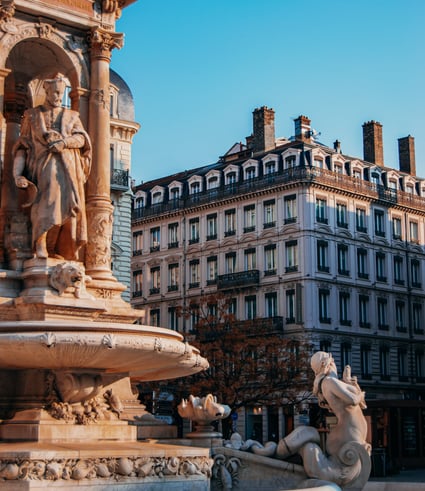

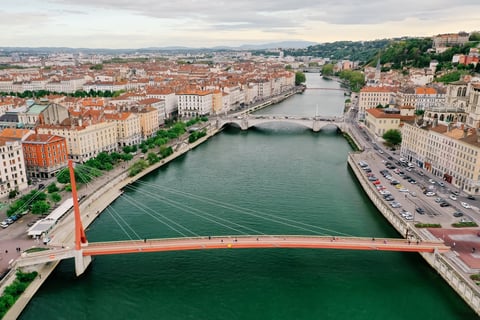

Marseille - A Mediterranean Melting Pot:
Introduction: Nestled on the Mediterranean coast, Marseille is a city that pulses with a vibrant blend of cultures, where the echoes of its maritime history mingle with the influences of North Africa and the Middle East.
Vieux-Port and Seaside Charms: The heart of Marseille beats at the Vieux-Port, a bustling harbor where colorful fishing boats and yachts dock against a backdrop of historic architecture. Stroll along the waterfront, indulge in freshly caught seafood at local markets, and absorb the lively atmosphere of this dynamic maritime city.
Le Panier and Historic Charm: Le Panier, Marseille's historic district, is a labyrinth of narrow streets adorned with street art, vibrant facades, and hidden squares. Explore charming boutiques, artisan workshops, and art galleries as you soak in the authentic charm of this culturally rich neighborhood.
Marseille's Calanques: Nature meets urban life in Marseille's Calanques, a series of fjord-like inlets and limestone cliffs along the Mediterranean coast. Hike or boat to these natural wonders for a breathtaking escape from the city, where crystal-clear waters and untouched landscapes create a haven for outdoor enthusiasts.
Diverse Cuisine: Marseille's culinary scene mirrors its multicultural population. Sample savory bouillabaisse, a traditional fisherman's stew, or enjoy North African and Middle Eastern flavors in the local markets. The city's diverse gastronomy is a testament to its status as a Mediterranean melting pot.
Cultural Mosaic: Marseille's cultural diversity is evident in its numerous museums, including the MuCEM (Museum of European and Mediterranean Civilizations) and the Musée d'Histoire de Marseille. These institutions showcase the city's rich history, emphasizing its role as a crossroads of civilizations.
Best Time: Spring (April to June) and Fall (September to October) Why: These seasons provide pleasant weather for outdoor activities, exploring the Calanques, and enjoying the vibrant street life. Summer can be hot, but the sea breeze offers some relief.
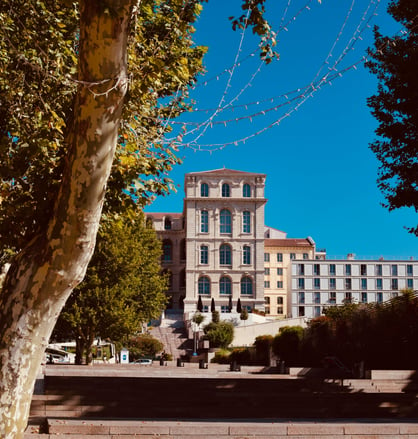

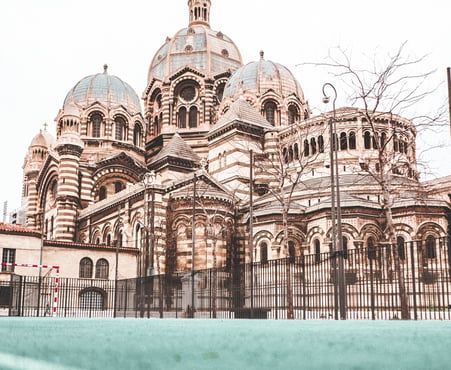

Bordeaux - The Wine Capital:
Introduction: Nestled in the heart of the renowned wine region of Aquitaine, Bordeaux is a city that intoxicates the senses with its exquisite vineyards, historic architecture, and a commitment to the art of winemaking.
Vineyards and Wine Tasting: Bordeaux is synonymous with wine, boasting some of the world's most prestigious vineyards. Take a scenic drive through the vine-covered hills of Saint-Émilion or Médoc, where illustrious châteaux produce the finest Bordeaux wines. Enjoy guided tours and tastings, immersing yourself in the craftsmanship of winemaking.
Place de la Bourse and Architectural Grandeur: The city's architectural splendor is epitomized by the Place de la Bourse, a UNESCO World Heritage site. Marvel at the grandeur of this square, flanked by 18th-century buildings and reflecting in the Miroir d'eau, the world's largest reflecting pool.
Cité du Vin and Wine Culture: Bordeaux's commitment to wine culture is embodied in the Cité du Vin, a contemporary wine museum and cultural center. Discover the history of wine, partake in tastings from around the globe, and enjoy panoramic views of the city from the Belvedere.
Historic Quarters: Bordeaux's historic districts, such as Saint-Pierre and Saint-Michel, are a tapestry of medieval streets, charming squares, and lively markets. The Grosse Cloche, a medieval gate, stands as a testament to the city's rich heritage.
Culinary Excellence: In addition to its wine, Bordeaux is celebrated for its gastronomy. Indulge in gourmet delights at Michelin-starred restaurants or savor local specialties like entrecôte bordelaise. The city's vibrant food scene complements its world-class wines.
Best Time: Late spring (May to June) and early fall (September to October) Why: Grapevines flourish during these months, and wine regions are not too hot or crowded. Harvest season in the fall adds a special charm to Bordeaux's vineyards.
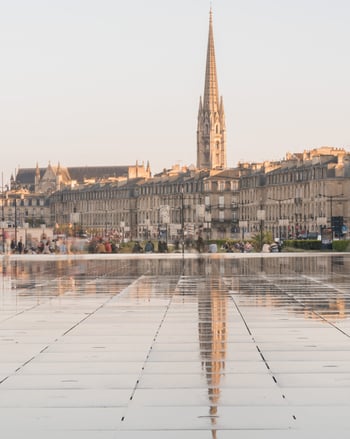

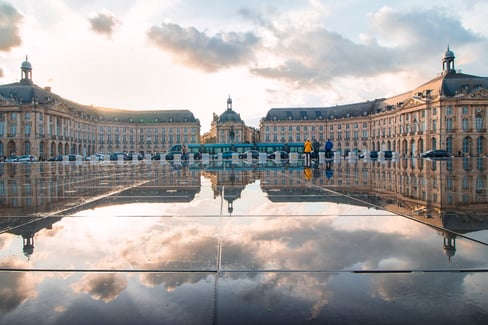

Strasbourg - A Fusion of Cultures:
Introduction: Strasbourg, situated on the border of France and Germany, is a city where French and German influences merge seamlessly, creating a unique cultural fusion. With its charming canals, timber-framed houses, and a blend of European traditions, Strasbourg captures the essence of cross-cultural harmony.
La Petite France and Canal Charm: La Petite France, Strasbourg's historic quarter, is a postcard-perfect district characterized by cobblestone streets, half-timbered houses, and flower-filled balconies. The district's canals, adorned with charming bridges, provide an idyllic setting for leisurely strolls.
Strasbourg Cathedral and Gothic Majesty: The Strasbourg Cathedral, a masterpiece of Gothic architecture, dominates the city's skyline. Climb to the top for panoramic views of Strasbourg and the surrounding Alsace region. The cathedral's intricate facade and stunning stained glass windows are a testament to centuries of craftsmanship.
European Quarter and Institutions: Strasbourg hosts key European institutions, including the European Parliament and the Council of Europe. The European Quarter showcases modern architecture and represents the city's role as a symbol of European unity.
Multilingual Harmony: In Strasbourg, French and German coexist harmoniously. Street signs, restaurant menus, and public spaces reflect the bilingual nature of the city. Visitors can experience a rich linguistic and cultural interchange as they explore the streets.
Christmas Markets and Tradition: Strasbourg is renowned for hosting one of Europe's oldest and most enchanting Christmas markets. The city transforms into a winter wonderland, with festive decorations, traditional Alsatian crafts, and the scent of mulled wine filling the air.
Best Time: Late spring (May to June) and early fall (September to October) Why: Strasbourg's charming streets and canals are delightful during mild weather. The city's festivals, like the Christmas Market in December, add a magical touch.
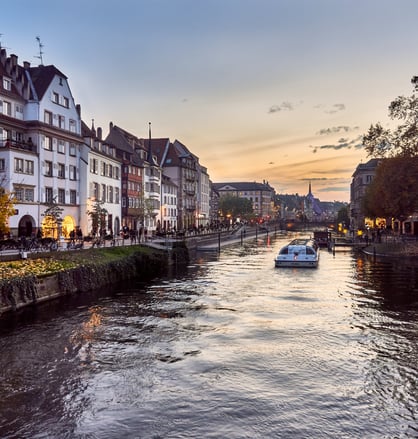

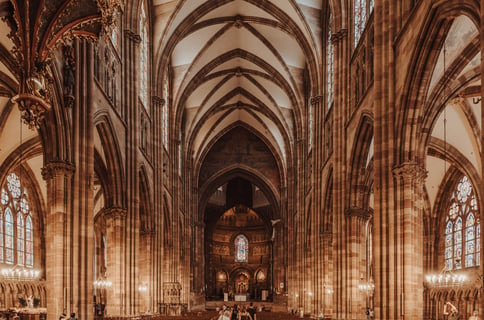

Toulouse - The Pink City:
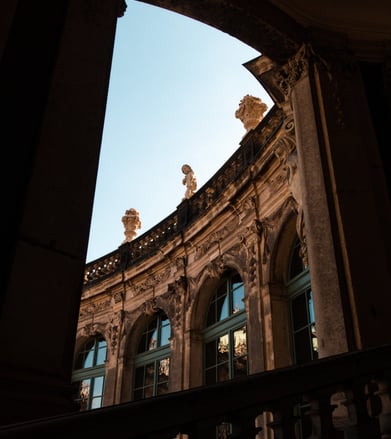

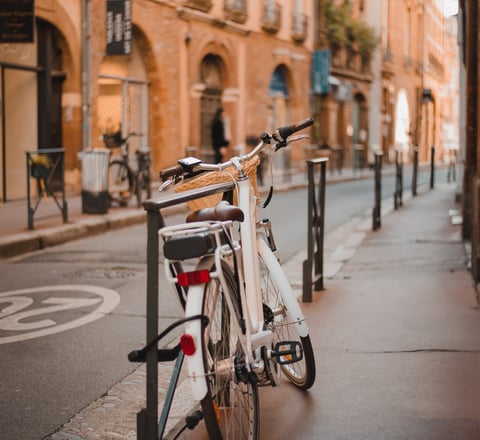

Introduction: Toulouse, aptly named "The Pink City" due to its distinctive terracotta-colored buildings, is a dynamic metropolis in the south of France. Beyond its colorful facade, Toulouse is a city that seamlessly combines aerospace innovation, historical charm, and a lively cultural scene.
Aerospace Hub: Toulouse is a global aerospace powerhouse, home to the Airbus headquarters and the renowned Cité de l'Espace space museum. Visitors can delve into the fascinating world of aviation, explore space exhibits, and even witness the assembly of Airbus aircraft at the sprawling facilities.
Capitole de Toulouse and City Center: At the heart of Toulouse lies the Capitole de Toulouse, a grand neoclassical building housing the city hall and an opera house. The Place du Capitole, surrounded by cafes and shops, serves as a vibrant gathering spot. The bustling city center radiates energy with its lively markets, historic streets, and a mix of architectural styles.
Canal du Midi: The Canal du Midi, a UNESCO World Heritage site, weaves through Toulouse, offering picturesque walks and boat rides. Lined with trees and historic structures, this canal provides a serene escape within the bustling city, inviting locals and visitors alike to relax along its scenic banks.
Saint-Sernin Basilica: The Saint-Sernin Basilica, a masterpiece of Romanesque architecture, stands as one of the largest remaining Romanesque buildings in Europe. Pilgrims have visited this spiritual sanctuary for centuries, and its intricately designed interior is a testament to Toulouse's rich historical and religious heritage.
Gastronomy and Cuisine: Toulouse's gastronomy is a treat for food enthusiasts. Indulge in regional specialties such as cassoulet, a hearty bean stew with meat, and explore the city's vibrant food markets, where local produce and culinary delights are showcased.
Best Time: Spring (April to June) and Fall (September to October) Why: Enjoy Toulouse's outdoor spaces and cultural attractions during these mild seasons. Summers can be warm, but the shoulder seasons offer comfortable temperatures.
Avignon - The City of Popes:
Introduction: Avignon, a city nestled on the banks of the Rhône River, is synonymous with history, art, and its role as the "City of Popes." Steeped in medieval charm, Avignon invites visitors to step back in time and explore its architectural treasures.
Palais des Papes: The Palais des Papes, or Palace of the Popes, is a UNESCO World Heritage site and a monumental testament to Avignon's significance during the 14th-century papal schism. Explore the grand chambers, intricate frescoes, and the papal gardens as you immerse yourself in the city's rich ecclesiastical history.
Pont Saint-Bénézet: The Pont Saint-Bénézet, also known as the Pont d'Avignon, is a famous bridge that stretches halfway across the Rhône River. Though only a portion of the original bridge remains, it offers stunning views of the city and surrounding landscapes.
Avignon Festival: Every summer, Avignon hosts the Festival d'Avignon, one of the world's most renowned theater festivals. The city comes alive with performances, street art, and cultural events, attracting artists and spectators from around the globe.
Place de l'Horloge and Old Town: The lively Place de l'Horloge serves as the heart of Avignon's Old Town. Lined with cafes, restaurants, and the City Hall, the square exudes a vibrant atmosphere. Wander through the cobblestone streets of the Old Town, discovering hidden squares, charming boutiques, and historic churches.
Rocher des Doms: Rising above the city, Rocher des Doms is a scenic park offering panoramic views of Avignon and the Rhône River. Take a leisurely stroll through the gardens, enjoy the shade of ancient trees, and appreciate the tranquil beauty of this elevated oasis.
Best Time: Late spring (May to June) and early fall (September to October) Why: Experience pleasant weather without the intense summer heat. The city is vibrant, and the Palais des Papes and other historical sites are more enjoyable without the summer crowds.


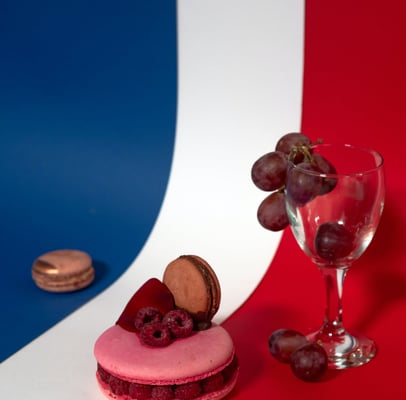

Nantes - A Creative Hub:
Introduction: Nantes, situated along the Loire River, has transformed from an industrial center into a vibrant creative hub. With its commitment to innovation, artistic expression, and green initiatives, Nantes stands as a testament to the power of creativity in urban evolution.
Machines of the Isle of Nantes: The Machines of the Isle of Nantes, an extraordinary blend of art and engineering, features colossal mechanical creatures inspired by the works of Jules Verne. Visitors can take a ride on the Grand Elephant or explore the Carrousel des Mondes Marins, a carousel submerged in a marine fantasy world.
Château des Ducs de Bretagne: The Château des Ducs de Bretagne, a medieval castle, is a symbol of Nantes' historical significance. Explore its ramparts, courtyards, and exhibitions that delve into the city's past, including its role in the slave trade.
Île de Nantes and Contemporary Architecture: Île de Nantes, a former shipyard turned urban development project, showcases avant-garde architecture and sustainable design. The Hangar à Bananes, a transformed warehouse district, buzzes with creative energy, housing art galleries, cafes, and cultural spaces.
Cultural Spaces: Nantes boasts a variety of cultural institutions, including the Lieu Unique, a multidisciplinary arts center housed in a former biscuit factory. The city hosts events such as the Voyage à Nantes, an annual art festival that transforms the urban landscape into an immersive art experience.
Green Initiatives: Nantes prioritizes sustainability, with extensive green spaces, pedestrian-friendly zones, and initiatives such as the Green Line, a walking route guiding visitors through the city's eco-friendly practices and initiatives.
Best Time: Late spring (May to June) and early fall (September to October) Why: Nantes' green spaces and outdoor events are best enjoyed during these seasons. The creative energy of the city is palpable, and the weather is pleasant.
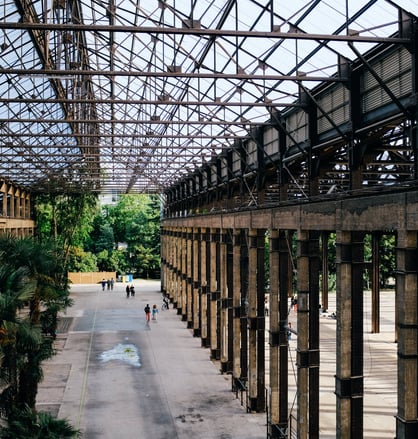



Montpellier - Mediterranean Elegance:
Introduction: Nestled in the Languedoc region along the Mediterranean coast, Montpellier is a city that exudes a perfect blend of historical charm and modern elegance. With its vibrant street life, beautiful gardens, and cultural treasures, Montpellier invites visitors to savor the elegance of the Mediterranean.
Place de la Comédie: The Place de la Comédie, a grand square in the heart of Montpellier, serves as a focal point for city life. Lined with cafes, theaters, and the iconic Three Graces fountain, this bustling square is perfect for people-watching and immersing yourself in the lively atmosphere.
Historic Old Town: Montpellier's historic Old Town boasts narrow cobblestone streets, medieval buildings, and hidden courtyards. The Place Saint-Roch, with its charming cafes and the Saint-Roch Church, provides a glimpse into the city's architectural and cultural heritage.
Jardin des Plantes: The Jardin des Plantes, one of the oldest botanical gardens in France, is a haven of tranquility. Stroll through its lush greenery, admire exotic plant collections, and enjoy the serene ambiance of this beautifully landscaped garden.
Peyrou Promenade and Aqueduct: The Peyrou Promenade, a vast esplanade with a majestic water tower, offers panoramic views of Montpellier and the distant Cévennes mountains. Nearby, the Saint-Clément Aqueduct, a graceful structure, adds to the city's architectural splendor.
Cultural Institutions: Montpellier is home to cultural institutions such as the Musée Fabre, showcasing a vast collection of European art, and the Corum, a modern conference and concert venue. The city's commitment
Best Time: Late spring (May to June) and early fall (September to October) Why: Experience Montpellier's elegance during mild temperatures. The Jardin des Plantes and outdoor promenades are especially enjoyable in the spring and fall.
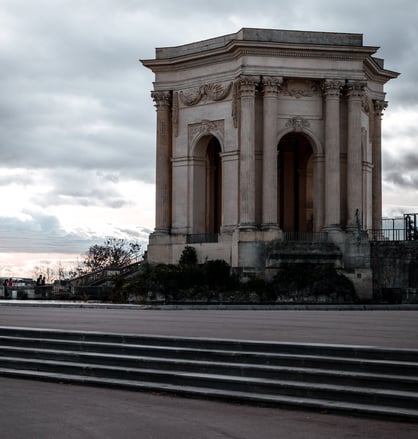

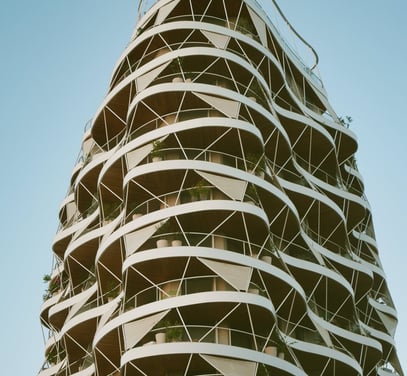

Conclusion:
Whether you seek the romance of Paris, the culinary delights of Lyon, or the maritime charm of Marseille, France offers a diverse range of cities, each with its own unique appeal. From historical landmarks to artistic treasures, the top 10 cities listed above promise an unforgettable journey through the heart of this enchanting country. Embrace the elegance, indulge in the cuisine, and immerse yourself in the culture as you discover the beauty of France. Bon voyage!
I hope you found what you were looking for.
